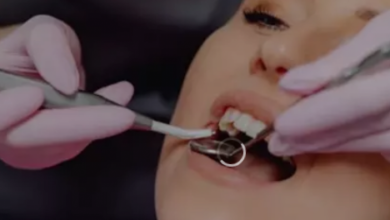THE STAGE BY STAGE TREATMENT OF BREAST CANCER

Image source: https://www.narayanahealth.org/blog/role-of-radiation-therapy-in-breast-cancer-treatment/
Every stage of breast cancer has certain types of treatments that are particular to it. Different people react to treatments differently and so it is best to go with the treatments that work best for you. Some people need a combination of two or more treatments to be cancer free and others might get better after undergoing just one type of therapy.
Your health care provider will help you know the stage of your cancer after diagnosis and having collected your medical history will suggest the best treatment options for you. Other factors that affect your treatment options include; your age, family history, genetic makeup etc.
Using Cancer-diagnostic ELISA kits helps us understand that breast cancer therapies are often effective depending on the stage of your cancer. Click here to learn about medically-recommended featured products. Each stage of breast cancer has its particular treatment as the treatment used for the early stages of breast cancer will not be effective for the advanced stage. Let’s look at the different stages of breast cancer.
Table of Contents
What are the stages of breast cancer?

Image source: https://hellodoctor.com.ph/cancer/breast-cancer/complications-of-breast-cancer-treatment/
The different stages of breast cancer range from 0-4. Each stage has determining factors and they include;
- The tumor size
- The number of affected lymph nodes
- Whether or not the cancer is metastatic (spread to other parts of the body)
The different stages of breast cancer are as follows;
- Stage 0 breast cancer: This is the earliest stage of breast cancer where the cancerous cells are limited only to the milk ducts. This is known as non-invasive breast cancer or ductal carcinoma in situ (DCIS). At this stage the breast cancer must not be neglected as it can become invasive and spread outside the milk ducts. Early treatment can prevent breast cancer at this stage from becoming invasive.
- Stage 1 breast cancer: This is the next stage after DCIS and it indicates that the cancerous cells has spread to the breast tissue surrounding the milk ducts. Stage 1 breast cancer are of two subcategories; stage 1A and stage 1B.
- Stage 1A: Women with breast cancer that falls into this subcategory has a tumor with diameter size of not more than 2cm that hasn’t spread out.
- Stage 1B: Women in this subcategory might have no tumor but have cancerous cells in clusters which have diameter sizes between2-2mm and may be found in the lymph nodes. Or, they can have a tumor that is not larger than 2cm alongside the cancerous cells in clusters.
- Stage 2 breast cancer: This stage of breast cancer like stage 1 has two subcategories called 2A and 2B. Stage 2A breast cancer is an invasive breast cancer that
- Has cancerous masses over 2mm in diameter that have grown in and around the armpit region or the lymph nodes close to the breastbone but has no tumor growth in the breast.
- Has a tumor in the breast which is below 2cm in diameter and has spread to the axillary lymph nodes.
- Has a tumor of 2-5cm diameter which hasn’t spread to the axillary lymph nodes.
- Stage 2B breast cancer is an invasive breast cancer that
- Has 2-5 cm diameter tumor growing in the lymph nodes alongside clusters of 0.2-2 mm diameter sized cancerous cells.
- Has a tumor of about 2-5 cm diameter alongside cancerous cells that have spread out to 1-3 axillary lymph nodes or the lymph nodes close to the breastbone.
- Has a tumor with diameter larger than 5cm and cancerous cells which haven’t spread to the axillary lymph nodes.
- Stage 3 Breast Cancer: This has subcategories 3A, 3B, and 3C.
- 3A breast cancer is an invasive cancer that has no tumor, or has a tumor greater than 5 cm alongside clusters of cancerous cells of 0.2-2mm diameter or has tumor larger than 5cm and cancer cells that has spread to nearby axillary lymph nodes.
- 3B breast cancer is an invasive cancer with a tumor of any size that has spread to the wall of your chest or the skin of your breast causing swelling or an ulcer.
- 3C breast cancer is invasive and might not have a tumor or may have one of any size that is seen in 10 or more axillary lymph nodes. It could also spread to the lymph nodes above or below the collar bone.
- Stage 4 Breast Cancer: This is the most advanced stage of breast cancer. At this stage the patient’s cancer has spread to other parts of the body. It could also be reoccurring breast cancer which has spread to other parts of the body
Stage by Stage treating of Breast Cancer
Image source: https://www.healthcentral.com/condition/breast-cancer
Treating Stage 0 Breast Cancer (DCIS)
Since the cancer at this stage is relatively small, its spread can easily be stopped. Stage 0 breast cancer can be treated with
- Surgery,
- Radiation therapy and
- Hormone therapy.
Treating Stage 1 Breast Cancer
Even though surgery is the major treatment for this stage of cancer, there are a variety of treatments your doctor can recommend. These include;
- Surgery,
- Radiation therapy,
- Hormone therapy
- Chemotherapy
Treating Stage 2 Breast Cancer
This stage of cancer has two treatment options;
- Surgery and,
- Combination therapy
Treating Stage 3 Breast Cancer
At this stage, the treatment options include chemotherapy, surgery and radiation. Chemotherapy is administered to shrink the tumor before removing it surgically. Radiation therapy is used to kill off the remaining cancerous cells. Hormone therapy can also be recommended by your doctor.
Treating Stage 4 Breast Cancer
Treating breast cancer at this stage involves the use of combination therapy. This involves combining chemotherapy, radiation therapy and hormone therapy (if necessary). Surgery is not the first option for this stage of breast cancer but can be recommended sometimes by your doctor.
How to determine the stage of your breast cancer?
Different tests are used to determine which stage your breast cancer has gotten to. These tests include MRI, X-ray, CT scan, PET scan, and ultrasound. Physical exams and blood testing can also help your doctor to categorize your cancer. These tests help your doctor to know the location of cancer, determine whether your breast cancer is metastatic, and calculate your tumor size.
Thanks to advancements in the medical world, doctors with the help of elisa interpretation can detect these cancerous cells and proffer the best solution for you. On the other hand, with reasonable monoclonal antibody production cost, one can benefit from the treatment method to improve the antibody levels in their bodies. Nevertheless, it is worth every penny as it is one of the surest methods of replacing worn-out antibodies keeping your body less vulnerable to infections as it fights breast cancer.







